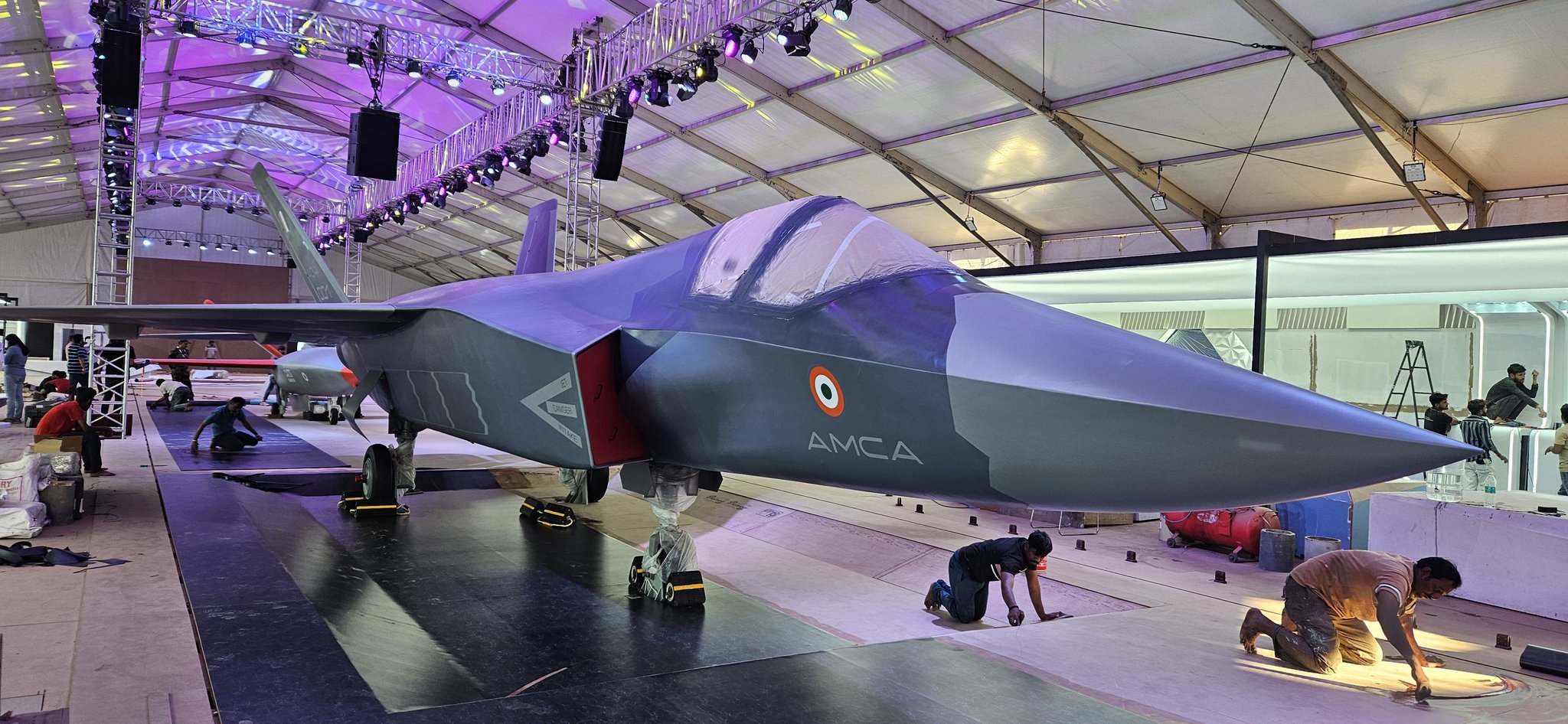SOURCE: AFI

IMAGE CC Vayu Aerospace Review
The Aeronautical Development Agency (ADA) has come under intense scrutiny after showcasing what appears to be an outdated 1:1 scale model of the Advanced Medium Combat Aircraft (AMCA) at Aero India 2025. The model, initially thought to represent the latest design iteration, has instead been identified as belonging to an older version of the jet, leading to widespread frustration among enthusiasts and experts on the social media platform X.
The model in question, which was displayed at the Hindustan Aeronautics Limited (HAL) Pavilion, was supposed to symbolize the pinnacle of India’s aerospace development efforts. However, keen observers quickly pointed out significant discrepancies. Notably, the model featured longer, connected horizontal swash plates in one variant and connected swash plates with vertical stabilizers in another, elements that do not align with the latest design iterations intended for production.
According to reports from idrw.org, the model showcased is believed to be from around 2020, originally developed for ground testing and measurement trials. This revelation has sparked a debate about the relevance and accuracy of what was supposed to be a showcase of cutting-edge technology.
The social media reaction has been swift and critical. Fans, analysts, and industry insiders used X to express their disappointment, with many highlighting the missed opportunity to present the most current and refined version of the AMCA. Posts on X have dissected the model’s features, comparing them against newer designs that have undergone several rounds of refinement, focusing on stealth characteristics, aerodynamics, and operational capabilities.
ADA has been working on the AMCA project with the goal of producing a fifth-generation stealth fighter for the Indian Air Force. The journey from design to prototype involves multiple iterations, each refining aspects like radar cross-section, engine integration, and weapon systems. The showcased model, while impressive in scale, does not reflect the latest advancements and design changes which aim to make the AMCA competitive on a global scale.
ADA has yet to officially comment on the matter, but there is an evident need to clarify the situation and perhaps offer insights into the development timeline, including what changes have been made since the model was built. For the AMCA project, this could serve as a lesson in how pivotal moments like Aero India can be leveraged to not only showcase achievements but also to communicate the dynamic nature of such complex developments.
NOTE: AFI is a proud outsourced content creator partner of IDRW.ORG. All content created by AFI is the sole property of AFI and is protected by copyright. AFI takes copyright infringement seriously and will pursue all legal options available to protect its content.